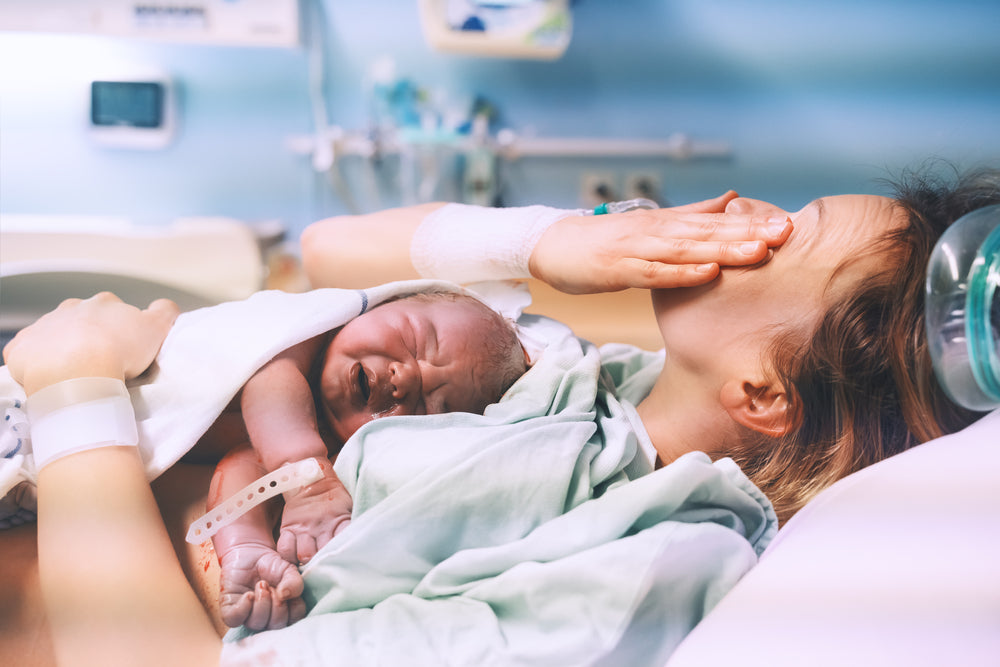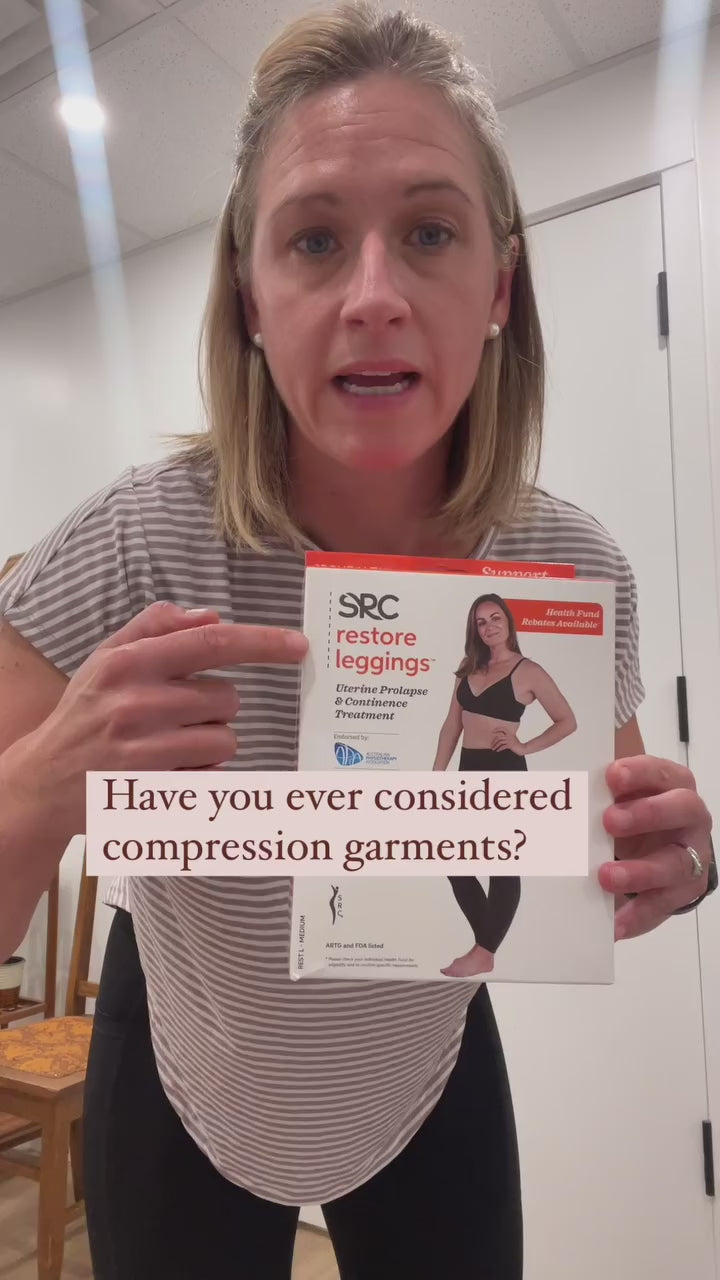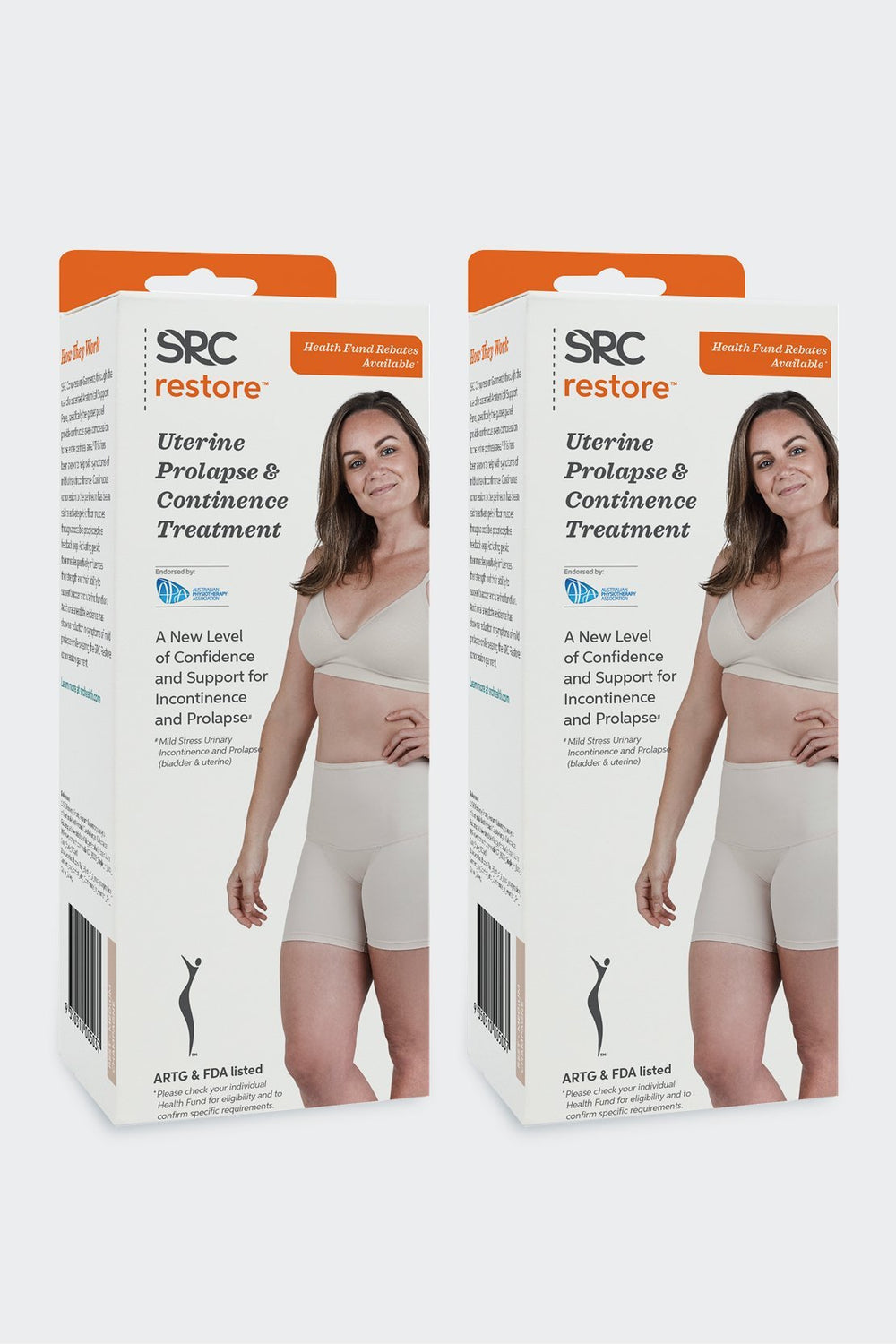Bringing life into the world is an extensive journey and doesn’t end once the baby is born. For many mums who have undergone a C-section, the recovery process can be one of the most challenging parts of the journey. Unlike uncomplicated vaginal births without tears or stitches, C-section wounds can require more time to heal properly, which poses additional challenges for mums whilst also caring for their newborns. Note that there are seven layers that have been cut through to get to your baby. Each of these layers must heal.
The same applies to gentle C-sections. The procedure is generally similar to a traditional C-section, but a gentle C-section allows you to watch your baby’s birth and have immediate skin-to-skin contact with them. This can offer you a better bonding experience and reduce post-operative stress. However, while a gentle C-section can provide a sense of control and immediate connection that are often missing in traditional surgical deliveries, it is still a major procedure that requires a lot of care and time to heal.
Janette Yee, C-Section Recovery Expert
For new mums or those undergoing caesarean for the first time, the recovery can be particularly daunting and challenging, whether it’s from a gentle C-section or a regular one. Understanding the unique demands of C-section recovery can greatly ease this transition and promote a smoother and safer healing process..
C-Section Recovery Timeline
While each person heals differently, the recovery time for C-section procedures generally takes several weeks. Here’s what you can expect:
One Day After C-Section
As the (spinal or general) anaesthetic wears off, or when you wake up, you may feel the pain at its worst. You will experience pain at the incision site and post-birth cramps as your uterus starts to contract back. To manage the pain and discomfort, you will be given an oral narcotic or IV analgesia.
Vaginal bleeding is also the heaviest during the first days following the C-section. Apart from monitoring your incision for signs of infection, your medical team will also check vaginal bleeding and make sure that you have had a bowel movement. If you have difficulty defecating or passing gas, you may be given stool softeners until your bowel movements are soft and regular.
You can shower once your IV and catheter are removed. However, you will not be allowed to take a bath until your wound is fully healed.
Getting in and out of bed is not easy post-C-section, but it is recommended to gradually move around to prevent developing blood clots. You will be given anticoagulant injections daily to prevent this.
5-7 Days After C-Section

At this point, you will be allowed to go home to continue your recovery. If you have staples these will need to be removed on days 7-10 or after the wound is fully healed. Sutures are usually absorbable.
The risk of infection is highest during the first few weeks, so keeping your wound clean and dry is critical. The wound, including the surrounding tissues, will continue to feel tender for a week or two. It is advisable not to lift anything heavier than your baby and to avoid anything in the vagina, like menstrual products and douches.
Two Weeks After C-Section
You should start to feel more mobile, although your wound will still be tender. Your uterus is still returning to its original size, so contractions, especially during feeding if you are breastfeeding, are normal.
Your hormones are also changing that can affect your mood. It is common among recovering mums, but if you experience feelings of depression or anxiety, it’s important to talk to your doctor about it, as this may be a sign of early postpartum depression, which is very treatable.
Three to Four Weeks After C-Section
At this point of your C-section recovery timeline, you may be able to take longer walks and move around more comfortably. If you still experience some pain or discomfort, you can take pain medications as prescribed by your doctor.
Five to Six Weeks After C-Section

At approximately 6 weeks post-delivery, you will have a postpartum check-up with your doctor to examine your incision, vaginal bleeding and the size of your uterus. Your doctor will check for any signs of infection and ask about any concerns you have relating to you and your baby. If you are concerned about anything during the first 6-week period, you should contact your doctor for advice prior to your scheduled appointment.
Seven to Eight Weeks After C-Section
It takes many months to heal fully after a C-section delivery. This is major abdominal surgery after all. So, it’s important to take it easy and rest often, even if you feel you can return to your normal daily activities. Everybody heals differently, and your C-section recovery time may not be the same as for others. Listen to your body and adjust your activities accordingly. And if you need more time to heal, it’s okay—you’ll get there.
C-Section Recovery Tips
- Listen to your doctor’s advice. They may have different instructions for you depending on which stage of recovery you are at. Follow their advice and consult with them before starting any activity or medication that may impact your recovery.
- Wear postpartum recovery shorts or leggings. Recovery garments can help alleviate abdominal muscle separation, C-section and perineal wounds, and low back pain, as well as allow you to move more freely. You can begin wearing them on day one of your recovery.
- Drink plenty of fluids. You will need to replace the fluids you lost during delivery and boost your milk supply if you’re breastfeeding.
- Eat fibre-rich foods. Fibre acts as laxatives that help facilitate easier digestion, especially when you’re taking pain medications which may cause constipation.
- Avoid taking a bath or going swimming. Wait until your incision is fully healed.
- Use mild soap and water to clean your incision. Avoid scrubbing the wound. Once the wound is healed, you can apply a silicone strip. This will encourage better healing and reduce any scarring.
- Avoid driving. Wait until you’re feeling better and off prescription medications.
- Choose comfortable positions to feed your baby. There are many pillows available to make feeding your baby easier and less strenuous for you. Proper positioning during breastfeeding is also essential to avoid pressure on the surgical scar, reduce pain, and enhance the experience. The football hold, also known as the clutch hold, is ideal for C-section recovery. To do this, sit comfortably with a pillow for back support and use another pillow to support your arm and baby. Hold your baby beside you and on top of a pillow with their legs tucked under and their head and neck supported. This position keeps the baby's weight off your abdomen. Watch the step-by-step demonstration here.
- Eat well-balanced meals. Foods rich in vitamins (A, B, C, and D), as well as minerals (zinc and iron), can help speed up your wound recovery.1
- Start exercising. Consult a Women’s Health Physiotherapist prior to commencing any exercise. Ideally, having a consultation prior to giving birth will help you with a gentle exercise program for the first six weeks post-delivery. Try doing these gentle exercises, as they will help your C-section postpartum tummy start to heal. Your physiotherapist will provide you with a specific program tailored to your needs following your appointment with her at around six weeks.
When to Call the Doctor After a C-Section?

If you experience any of the following, visit your healthcare provider as soon as possible:
- Excessive pain
- Bleeding, pus, or swelling at the incision site
- Abnormal discharge
- Heavy vaginal bleeding
- Fever
- Pain or swelling in the legs
- Difficulty breathing or shortness of breath
- Chest pain
FAQs
1. How to get rid of a hanging belly after a C-section?There are surgical and non-surgical approaches that can help improve your hanging belly or C-section overhang. Wearing postpartum recovery garments, doing regular exercises, and maintaining a healthy diet can help flatten your C-section pouch. A reconstructive surgical procedure such as abdominoplasty (tummy tuck) can also be done to tighten loose muscles. Talk to your doctor about which methods you can use to effectively and safely get rid of your hanging belly.
2. How long does it take for your stomach to tighten up after a C-section?
It can take six to eight weeks for your stomach to gradually tighten up as your uterus returns to its normal size and your body flushes out excess fluids from pregnancy. However, keep in mind that every person is different and thus has different recovery timelines. You may also have abdominal muscle separation during recovery. Visit your pelvic health specialist to have this assessed.
3. Which position is best to sleep after a C-section?Sleeping on your back or side can minimise the pressure on your incision site. If you’re experiencing discomfort in your lower back, you can try placing a pillow or a rolled blanket under your knees when sleeping on your back or between your legs when sleeping on your side. Avoid lying on your stomach until your incision has fully healed and sutures have been removed.
4. How do I know my C-section is healing inside?Week by week, the C-section postpartum belly scar should gradually start to fade from red to pink, with the colouration looking uniform across the scar. It should also become less tender to touch, without anything seeping out of the scar.
5. How far can I walk 2 weeks after C-section?You can start walking for 5 or 20 minutes at a moderate pace to promote better blood flow and accelerate the healing process. You may also try walking with your little one in a stroller as a low-impact exercise and mum-and-baby bonding activity.
6. Why does my C-section scar still hurt months after surgery?It's common for some women to experience lingering pain around their C-section scar, even months or years after the procedure. This could be due to tight scar tissue pulling on surrounding skin and muscles, leading to discomfort during movements like stretching or bending. Additionally, nerve regeneration in the area can cause aches or burning sensations. If the pain persists, consider consulting a physical therapist for scar tissue management or speak to your doctor for further evaluation.
7. Why does my C-section scar itch, even long after it’s healed?Persistent itching around a C-section scar can occur due to nerve regeneration or the formation of keloid scars, which are thick, raised areas of scar tissue. Wearing softer fabrics or high-waisted clothing can help minimise irritation. Additionally, some women develop intertrigo, a fungal infection that thrives in moist environments, leading to itchy skin. If itching continues or intensifies, consult your doctor, who may recommend treatments like silicone creams or strips, steroid injections, or antifungal medications.
8. What should I do if my C-section scar smells, even after it’s healed?An unusual odour from a C-section scar, even months after healing, could indicate an infection like intertrigo, which occurs when skin folds trap moisture and create an environment for yeast or bacteria. This condition can cause itching, pain, and odour. Keeping the scar area clean and dry is crucial to prevent such infections. If you notice a persistent smell, it’s important to consult your doctor, who may prescribe topical or oral antifungal treatments or antibiotics to address the infection.
















